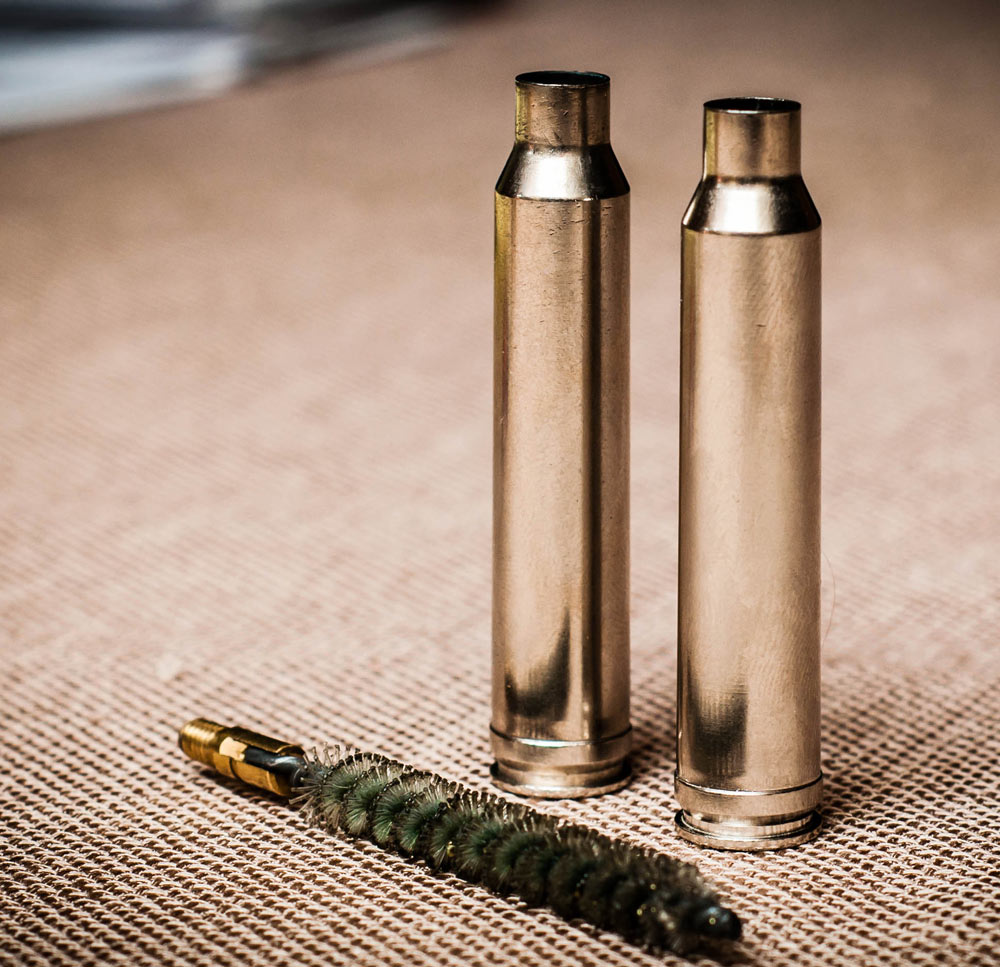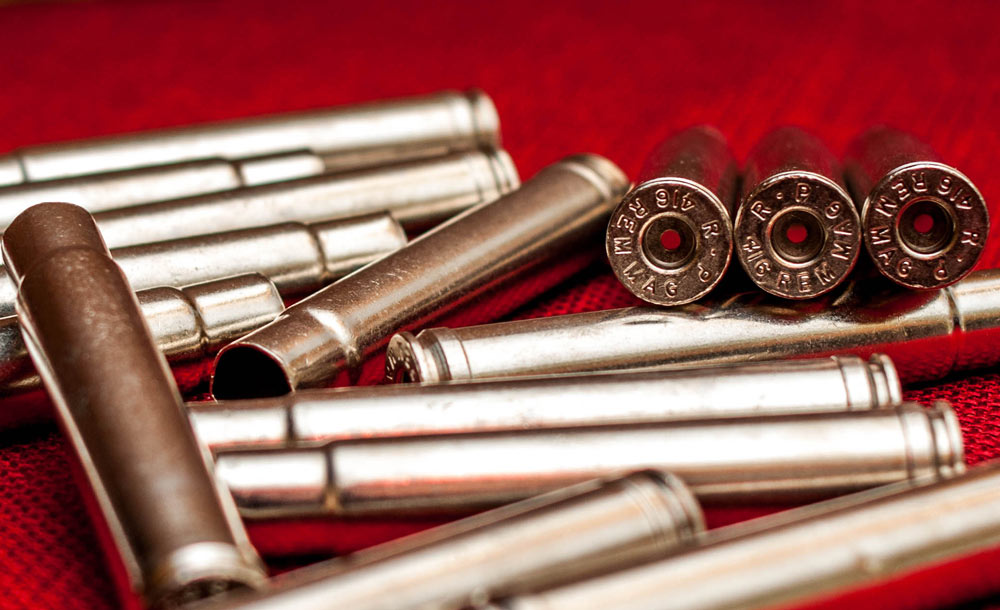How To Get Shiny Brass Cases

Nickel-plated cases are the shining gems of ammunition, but using the component for reloading takes some understanding of the textile's characteristics.
When I first saw nickel contumely cases around twenty or then years ago, I was immediately enamored. They were shiny, most mirror-like, and when I read that they wouldn't tarnish like a regular brass example, I simply had to have some.
I notwithstanding utilise them for some applications, but in those twenty years, I've had some experiences with them that take forced me to rethink their uses.
Nickel-Plated Case Structure
The structure of these cases is relatively simple. They are a contumely cartridge case, plated in nickel. Nickel is a metal that is nonetheless malleable enough to be worked, yet does not tarnish when carried in a leather beat holder or when handled with sweaty easily. These features are adept, but they come at a price.
Reloading Considerations Of Nickel-Plated Cases
Nickel is harder than brass, and in repeated uses will scratch the inside of a standard reloading die. They are likewise more than apt to stick in a reloading die. I know this immediate, because when I first tried to load some ammunition for my .375 Holland & Kingdom of the netherlands Magnum, all I had was nickel-plated cases, and I simply didn't employ enough lubricant in the resizing procedure. Yes, I stuck that case in the resizing die so bad it seemed like I had welded the example in at that place. Had to toss that die, and I never forgot it.
Nickel cases also seem to vary a bit more in instance volume. This can pose a trouble in higher-pressure rifle cartridges. I have used "nickel contumely" in my .22-250 Remington and my .300 Winchester Magnum, and here's what I've noticed. The cases that performed with the same level of accurateness as their all brass counterparts had a different point of impact while using the aforementioned powder charge, primer type and brand, and the same particular bullet.
This event is all but unnoticeable in the pistol cartridges, but the same drawbacks of reloading die damage apply unless you utilize a carbide or titanium resizing die. I apply them oftentimes, and I don't have an issue resizing nickel-plated pistol brass. I do however believe that as a result of the flaring of a pistol case's oral cavity the harder nickel brass has a shorter life than the all contumely variety.
And so in that location's the issue of having small bits of nickel flake off into your firearm's chamber or butt, and that tin can be a problem. Brass can be removed with a good solvent, but nickel tin can't be removed as easily, then when you clean your gun, be certain and use a practiced brush to remove all those tiny nickel fragments.
Usage Of Nickel-Plated Cases
Now, these issues don't stop me from using nickel-plated brass. In fact, in some rifles, I use information technology well-nigh exclusively. My favorite safari rifle, a Winchester Model 70 in .416 Remington Magnum, is one case.
When I first bought the rifle, Remington merely offered nickel-plated brass equally a reloading component. Therefore, I adult the load for this big stick using the case book of the nickel cartridge cases, and it has proved to exist a very accurate rifle and load. I use the nickel brass for all of my soft-point loads and reserve the contumely cases for the solid bullets that African big game requires.
The soft points are what I use most ofttimes, and beingness a sweaty Italian in the tropical sun, I don't worry about my paws tarnishing the cartridge cases while handling them on safari. This idea of 2 types and colors of cartridges makes them immediately identifiable. I apply those nickel cases for my .300 Winchester specifically for the slower 220-grain loads that I utilise for black bear, and I can hands differentiate between those and the contumely-cased, and much faster 180-grain loads I use for long-range work.

If you choose to load nickel-plated brass in your rifle, I recommend y'all pick up plenty to create a skilful amount of armament, so that y'all don't have to worry virtually a different point of impact with all contumely cases. If you're worried about pinpoint accuracy from your handgun, I would recommend segregating the brass from the nickel, and range testing the two to see if in that location is any difference in target bear on.
I'd exist willing to bet you won't, merely it'south ever good to know.
Go Started in Reloading:
 Adjacent Footstep: Download Your Complimentary Storm Tactical Printable Target Pack
Adjacent Footstep: Download Your Complimentary Storm Tactical Printable Target Pack
62 Printable MOA Targets with DOT Drills - Burglarize Range in YARDS This impressive target pack from our friends at Storm Tactical contains 62 printable targets for rifle and handgun range utilize. Target grids and bullseye sizes are in MOA. Ideal for long-range shooting!
Subscribe to the Gun Digest email newsletter and we'll send your print-calm target pack right away. Just enter your email address below.
 Adjacent Footstep: Download Your Complimentary Storm Tactical Printable Target Pack
Adjacent Footstep: Download Your Complimentary Storm Tactical Printable Target Pack
62 Printable MOA Targets with DOT Drills - Burglarize Range in YARDS This impressive target pack from our friends at Storm Tactical contains 62 printable targets for rifle and handgun range utilize. Target grids and bullseye sizes are in MOA. Ideal for long-range shooting!
Subscribe to the Gun Digest email newsletter and we'll send your print-calm target pack right away. Just enter your email address below.
Source: https://gundigest.com/more/how-to/the-nickel-brass-case-reloading-the-shiny-sibling

0 Response to "How To Get Shiny Brass Cases"
Post a Comment